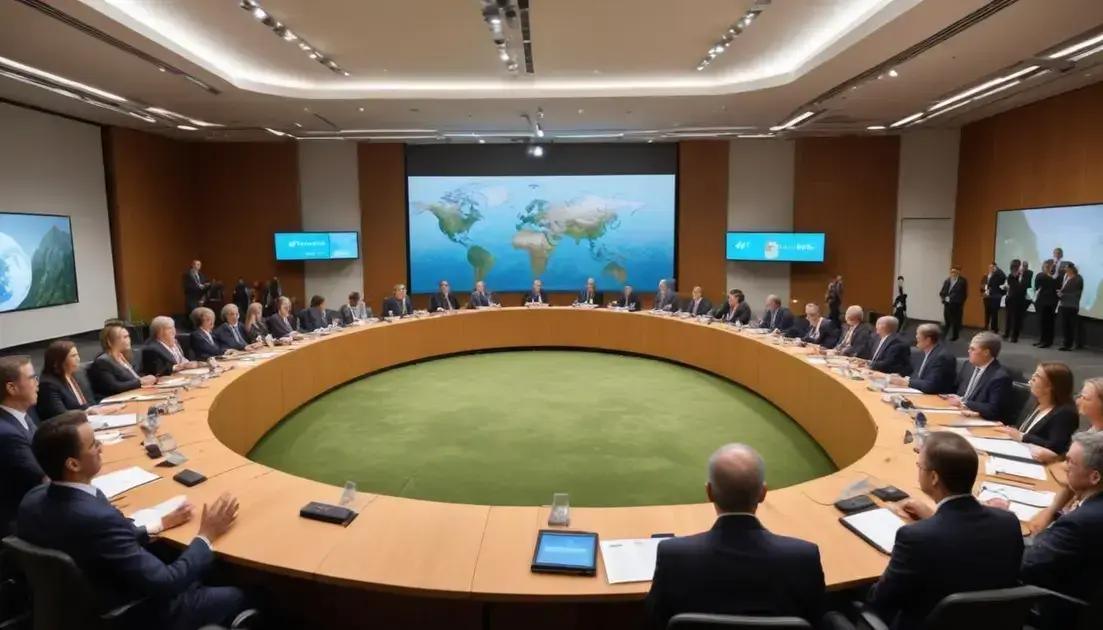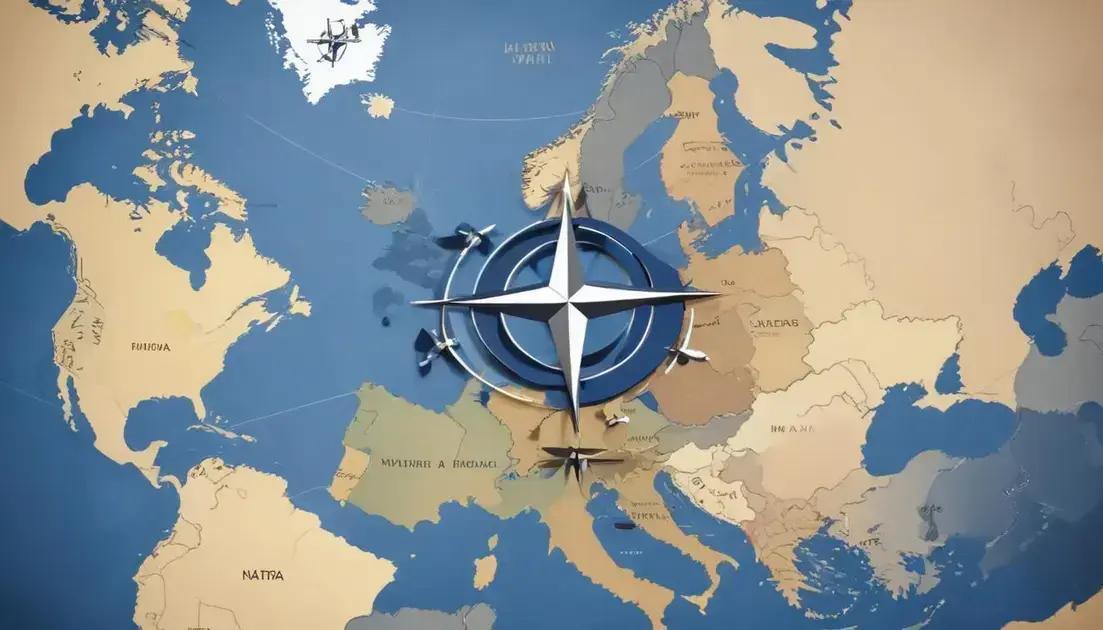
Kyoto Protocol: Science, Climate and Global Commitment
The Kyoto Protocol is a significant international treaty aimed at reducing greenhouse gas emissions and combating climate change. Established in 1997, it set binding commitments for developed countries to lower their emissions while promoting collaboration and market-based solutions. The Protocol raised global awareness about climate issues and influenced future agreements, such as the Paris Agreement. Today, efforts continue to adapt strategies that involve community engagement and technological innovation to ensure a sustainable future for the planet.
The Kyoto Protocol stands as a landmark treaty aimed at combating climate change and fostering global cooperation. Want to know its significance? Let’s dive in!
Introduction to the Kyoto Protocol
The Kyoto Protocol is an important global agreement aimed at reducing greenhouse gas emissions. It was established in 1997 during a big meeting in Kyoto, Japan. The main goal is to fight climate change by getting countries to limit the amount of gases they release into the air.
What Does the Protocol Do?
This treaty requires countries to take action. Some of the biggest polluters, like the United States and Europe, agreed to cut their emissions. Each country has specific targets they need to meet within certain time frames. This makes sure everyone is doing their part to help the planet.
Why Was It Created?
The main reason for the Kyoto Protocol is to address climate change, which is becoming a serious problem for our world. Scientists say rising temperatures and extreme weather can be traced back to greenhouse gases. This agreement encourages countries to work together to find solutions and stay committed to protecting our environment.
How Does It Work?
Countries that signed the Kyoto Protocol must report on their progress. If they are not meeting their targets, they may face consequences. The idea is to encourage nations to reduce dependence on fossil fuels and invest more in renewable energy sources like wind and solar power.
Overall, the Kyoto Protocol marks a significant step toward a sustainable future. By coming together, countries can help create a healthier planet for everyone.
Background of the Kyoto Protocol
The background of the Kyoto Protocol is rooted in growing concerns about climate change. In the 1980s, scientists began to warn us about the risks of rising temperatures. They linked this to the increase of greenhouse gases from human activities.
Initial Meetings and Awareness
Over the years, countries recognized the importance of taking action. In 1992, the United Nations held a big meeting in Rio de Janeiro. This event brought together leaders from many nations to discuss ways to protect our planet. The discussions led to the creation of frameworks for future agreements.
Establishing the Protocol
In 1997, at a meeting in Kyoto, Japan, the Kyoto Protocol was born. This agreement was a significant step toward fighting climate change. It marked the first time countries committed to reducing their greenhouse gas emissions.
Adoption and Ratification
After it was created, the Kyoto Protocol needed to be ratified by countries to take effect. Many nations supported it, including those from Europe and Japan. The United States initially signed but later decided not to commit. This decision caused a lot of debates internationally.
The Protocol officially started in 2005 and has shaped discussions about climate policy ever since. It helped raise awareness about the need for global cooperation in combatting climate change.
Key Outcomes of the Protocol
The Kyoto Protocol led to several important outcomes in the fight against climate change. First, it encouraged countries to set specific targets for reducing their greenhouse gas emissions. This was a significant shift in how nations viewed their responsibility for the environment.
Binding Commitments
One key feature of the Protocol is that it created binding commitments for developed countries. This meant they had to take real steps to cut emissions. The agreement aimed to hold these countries accountable for their actions and ensure they followed through on their promises.
Market Mechanisms
The Protocol also introduced market-based mechanisms, like emissions trading. This allows countries to buy and sell emission allowances. If a country reduces emissions effectively, it can profit by selling its extra allowances to countries that need to cut back more.
Increased Awareness
Another outcome was a boost in global awareness about climate change. The Protocol made it clear that many nations must work together to protect the environment. It spurred discussions about climate policy and led to new initiatives and agreements.
Legacy and Future Agreements
While the Kyoto Protocol had its challenges, it laid the groundwork for future international climate agreements. It showed the world that cooperation is vital to tackle climate change. This helped inspire efforts like the Paris Agreement, which built on the foundation that the Protocol created.
Global Impact of the Kyoto Protocol
The Kyoto Protocol has had a significant global impact on climate change efforts. It marked a major shift in how countries deal with the environment. By setting targets, the Protocol inspired both developed and developing nations to take action.
Encouraging Emission Reductions
As countries committed to reduce their greenhouse gas emissions, many began to adopt cleaner technologies. This led to increased investments in renewable energy sources like wind and solar. The Protocol changed the way many nations approach energy use.
Fostering International Cooperation
The Protocol also promoted international cooperation. Countries that signed it had to work together towards common goals. This collaboration built trust and laid the groundwork for future climate agreements.
Influencing Policy Changes
Another important outcome was its influence on national policies. Governments around the world started to create regulations aimed at cutting emissions. They began to see that protecting the environment could also drive economic growth.
Global Climate Awareness
On a broader scale, the Kyoto Protocol raised awareness about climate change. It brought the issue into the spotlight, making it a priority on the global agenda. Today, many people realize the importance of acting against climate change, thanks in part to the Protocol’s initiatives.
Overall, the Kyoto Protocol has shaped global efforts to tackle climate change. Its effects continue to be felt as nations strive for a sustainable future.
Future of Climate Agreements
The future of climate agreements looks promising and challenging at the same time. Many countries are learning from the Kyoto Protocol to create better agreements. The goal is to be more effective in reducing greenhouse gas emissions.
New Approaches
Future agreements may focus on more flexible guidelines. This means countries can set their own goals based on their unique situations. Adaptable strategies can encourage more countries to participate.
Increased Collaboration
Collaboration will be key in future climate actions. Countries might work together on projects that benefit everyone. It can be easier to tackle climate change when nations share their resources and knowledge.
Technology and Innovation
Advancements in technology can drive new agreements. Cleaner technologies are being developed every day. These innovations could provide alternative solutions for producing energy and reducing emissions.
Engaging Communities
Engaging local communities will also play a role in future climate agreements. By involving people at the grassroots level, nations can build stronger support for climate actions. This can lead to a more robust commitment to fighting climate change.
Ultimately, the future of climate agreements will require ongoing dialogue and action. It’s vital that all countries come together to meet the challenge of climate change.
Conclusion
In conclusion, the Kyoto Protocol has played a crucial role in shaping climate action globally. It set a strong example for international cooperation in reducing greenhouse gas emissions. While it faced challenges, its achievements laid the groundwork for future climate agreements.
Looking ahead, embracing new strategies and technologies will be essential. Countries must work together and engage local communities to effectively tackle climate change. The journey is not easy, but by learning from past experiences, we can create a brighter and more sustainable future for our planet.


